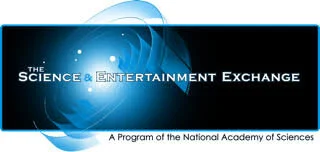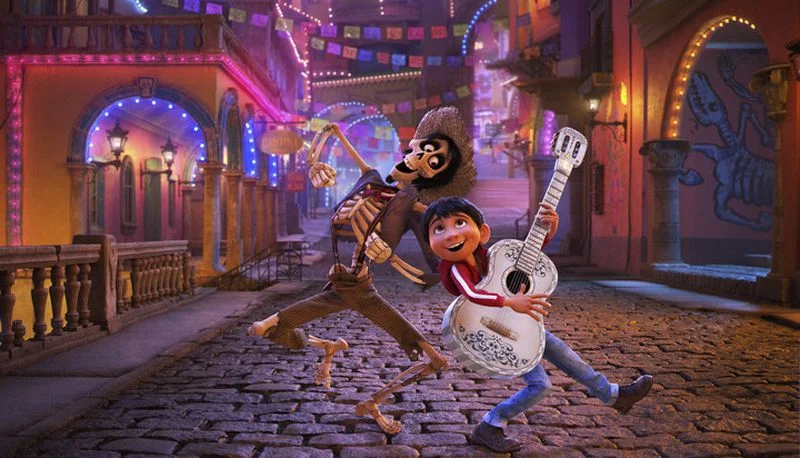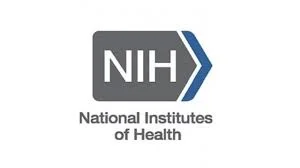DIVE DEEPER INTO REAL-WORLD ANTHROPOLOGY, GENETICS & ETHICS
ANYA is fiction inspired by and grounded in real discoveries in anthropology and genetics. This page takes a deeper dive into some of the real-world science and ethics related to ANYA and provides resources for educators and others using ANYA as tool to spark discussion.
First Encounter Productions YouTube Channel with clips and interviews
Educators & Students: ANYA is available for classroom use. Check your school library!
Forbes.com contributor, Eva Amsen, writes about the intersection of science and art. Here she reviews the intertwining roles of science and diversity in the creation of ANYA. (5/31/19)
Science advisor, Dr. Ruth McCole, shares her experiences on ANYA.
Creating the story of ANYA allowed anthropologist Carylanna Taylor “to apply anthropological concepts like cultural relativity, cultural construction of race, and evolution to create the biology and culture of a new species of humans and imagine what it might be like for them when a well-meaning scientist “discovers” their existence.”
ANYA co-creator and anthropologist Carylanna Taylor discusses how genetics, genetic testing, gene-editing, and ethics became central to ANYA’s story and clarifies the line between fact and fiction.
ANYA’s lab scenes were filmed at Dr. Andreas Pfenning’s Carnegie Mellon University computational genetics lab.
Carylanna reflects on her and Jacob’s creative collaboration during the development of ANYA with geneticists Ting Wu and Ruth McCole who they found through The National Academy of Sciences - The Science & Entertainment Exchange.
Top takeaway?As a filmmaker approaching a scientist with a fiction project, you’re extending an invitation to play. Make the most of the opportunity and allow for time and space to brainstorm new alternatives for your project. In our unforgettable experience, the result was not just a more scientifically accurate film but more well rounded characters and a better story.
FACT & FICTION COLLIDE
While we were writing, filming, editing, and releasing ANYA, real-world news about topics related to ANYA bubbled up all around. Here’s a sample. A quick Google News, Google Scholar, or Lexis Nexus search will pull up dozens more news stories and academic articles.
News About Human Origins
Our family tree is getting bushier with each new study!
Today, a study published in CELL draws on DNA analysis of living Southeast Asians to show that a fourth species of humans lived alongside modern humans, Denisovans, and Neanderthals . What’s more, the Denisovans were surprisingly diverse and may have been the last group to live beside modern humans, contributing to the DNA of modern humans as recently as 15,000 years ago.
Article: Maya Wei-Haas, National Geographic
Image text: Jason Treat and Maya Wei-Haas, NG Staff
Image source: Murray P. Cox, Massey University
Evolutionary anthropologist John Hawks shares his thoughts on the meaning of the latest discovery in the human family tree: a previously undiscovered new species of human relatives named Homo luzonensis after the island in the Philippines where they lived.
This post to the Sapiens.org anthropology blog, puts the finding in perspective: over the past 20 years there’s been a boom of unprecedented new discoveries. Not all may merit the label “new species” but they speak to many-branched human tree and many opportunities for new exploration.
Mounting evidence shows that ancient human groups (some once considered different species) not only coexisted, they interbred. (Nature)
Carl Zimmer: “Genetic analysis of bones discovered in a Siberian cave hints that the prehistoric world may have been filled with ‘hybrid’ humans.” (New York Times)
“When modern humans migrated out of Africa some 60,000 years ago, they found the Eurasian continent already inhabited by brawny, big-browed Neanderthals. We know that at least some encounters between the two kinds of human produced offspring, because the genomes of people living outside Africa today are composed of some 1 to 4 percent Neanderthal DNA. Two studies published concurrently in Nature and Science on Wednesday suggest that while the Neanderthal contribution to our genomes was modest, it may have proved vitally important.” (Ed Yong, National Geographic)
Image comparing Neanderthal and modern human anatomy by Joe McNally.
It’s no coincidence that this is the month we began writing ANYA and that ANYA’s fictional geneticist, “Dr. Seymour Livingston,” studies Neanderthal DNA.
News about Genetic Testing, Gene Editing, & Ethics
The CRISPR Journal, Vol 2, No 5
Jodi Halpern, Sharon E. O'Hara, Kevin W. Doxzen, Lea B. Witkowsky, and Aleksa L. Owen
“…While essential, public input and principles are not sufficient to ensure ethical uses of this technology. We propose an approach that relies not only on agreed-upon principles and a democratic process but requires a Human Rights Impact Assessment to evaluate the potential burdens that such biomedical interventions may place on human rights.”
In ANYA, fictional scientist Dr. Seymour Livingston considers pursuing clandestine use of “gene-editing technology” to help a friend conceive. At the time of filming and now, that technology would be CRISPR.
As we wrote the script and filmed, our collaborators at PGED were working to educate legislators about genetics technologies, including CRISPR. Now the first law to directly regulate CRISPR has appeared in form of a California “human biohacking” bill demanding a warning on DYI genetic-engineering kits.
Article by Antonio Regalado for MIT Technology Review
During the development of ANYA we had the privilege of attending several PGED congressional briefings. This is the first resolution I’ve noticed to come out in support of helping “forge an international consensus regarding the limits of ethical clinical use of genome-edited human embryos.”
Article by Jef Akst for the The Scientist
Image by istock.com
ANYA takes a fictional look at a couple, a scientist, and a small community deciding whether to pursue gene-editing to have a healthy baby. In the real world, the race is on to produce — and to regulate — gene-edited babies.
When we filmed ANYA, this kind of gene-editing was still fiction. But by last November, when we were in post-production, news broke that a Chinese scientist had created twin “CRISPR babies.” Now, a Russian molecular biologist plans to implant gene-edited embryos in HIV+ volunteer mothers as early as the end of 2019. His goal is similar: to edit the embryos’ CCR5 genes in a way that reduces the risks of passing on HIV in utero.
This proposal comes at a time when most scientists believe that experiments on “gene-edited babies” should be banned until an international ethical framework is in place.
Read Nature’s 6/10/19 article on Dr. Denis Rebrikov’s controversial proposal.
Read Nature’s 6/11/19 Editorial urging the scientific community to intervene. (Image credit: Yorgos Nikas/SPL)
ANYA encourages viewers to join the worldwide debate now underway on how best to regulate gene editing in human sperm, eggs, and embryos.
“The scientist who edited the genomes of twin girls in an attempt to make them resistant to HIV might have inadvertently shortened their life expectancy.”
Article by Sara Reardon for Nature.
Image: Biophysicist He Jiankui helped to create the world's first gene-edited babies.
Image Credit: Mark Schiefelbein/AP/Shutterstock
The databases used in genetics research consist overwhelmingly of genomes from people of European descent. To boost the participation of marginalized communities in genetic studies, doctors must first win back their trust.
Article by: Eva Armesen for Undark
Visual by: University of Michigan School for Environment and Sustainability / Flickr
Investigations continue into Dr. He Jianku’s claim to have created the world’s first gene-edited babies. This article details responses from Dr. He’s American advisors when he was a postdoctoral fellow and grad student. The article raises a number of questions. Do faculty members — and academic institutions more generally — bear responsibility in the actions of the students they mentor? When does this obligation end? To whom should they report suspected ethical breaches or “corner cutting”? Especially when the students have moved on to other institutions or countries?
Article by Pam Belluck for the New York Times.
Image by Mark Schiefelbein, Associated Press: Dr. He’s team working on an embryo in a sperm injection microscope in Shenzhen, China.
“A push to calculate a "genetic income score" using giant DNA databases raises a raft of ethical questions.”
Article by Megan Molteni, Wired.
Image by Lauren Joseph, Getty Images.
ANYA deals with unintended consequences of contemporary genetic technologies and broaches the related ethics.
Stories coming out in the news suggest we only scratched the surface of what’s coming. At the 2019 Festival of Genomics in London, I learned a new UK initiative to collect 5,000,000 human genomes for medical and insurance purposes. Norway and other countries have similar but smaller programs. More sequenced DNA means bigger more accurate data bases for personalized medicine, crime fighting, and other purposes.
From news coming out of China this week, it appears that mass collection of DNA has given us something else to worry about: surveillance, oppression, and thorny issues about how foreign corporations and academics participate in legitimizing activities that might be illegal or at least unethical at home.
HERE ARE A few things you can buy with $200: one bluetooth-controlled fire pit, 100 lab-grown Impossible White Castle sliders, access to the 6.4 billion base pairs that make up all the DNA coiled inside your cells. Veritas Genetics current promotion offers $199 genome sequencing (typically $999). (Meghan Molteni for Wired.)
News about Diversity in Science & Film
UCLA’s “Hollywood Diversity Report 2019” shows that “despite gains in front of and behind the camera, women and minorities remain underrepresented in film and television. The study also included evidence that suggests audiences tend to prefer movies and TV shows that feature relatively diverse casts.”
By Tracy Brown for the LA Times, 2/21/19
Image Credit: Still from the animated film “Coco”
Fewer than 1 percent of doctorates in math are awarded to African-Americans. Edray Goins, who earned one of them, found the upper reaches of the math world a challenging place. His experiences offer insight into what academic life might be like for ANYA’s Dr. Seymour Livingston.
Diversity is central to ANYA: on screen, in the crew, and in the story. Article by Thessaly La Force (New York Times)
Additional Educational Resources
The website of the American Anthropological Association (AAA) offers K-12 teaching resources, field schools, public ed, and higher ed learning resources. Two online resources of note:
“The RACE Project explains differences among people and reveals the reality – and unreality – of race. The story of race is complex and may challenge how we think about race and human variation, about the differences and similarities among people.” (A video from this project makes an appearance in ANYA!)
“World on the Move: 100,000 Years of Human Migration, draws on scholarship concerning the depth of human history and the breadth of cultures across the globe to help people rethink their ideas about moving, displacement, and belonging—and to use what they learn to better understand their own migration histories and those of others.”
Image by: World on the Move
The Personal Genetics Education Project raises awareness and sparks conversation about the potential benefits as well as the ethical, legal, and social implications of personal genetics. They have free lesson plans available for high school and educators.
From associations and blogs to genomic databases and government initiatives, discover a wide range of genetics and genomics resources available online. Courtesy of Frontline Genomics.
Created by Dr. Laura Rivard's’ UCSD biology students, this site includes a range of introductory genetics tutorials, updates on current research and testing, and a chance to explore genetics laws and ethics through case studies.
This is a great place to start, but be aware that it appears to have been created in 2015 and may not be up to date.
The Genetics/Genomics Competency Center (G2C2) provides an online repository of curated genetics/genomics education materials for educators and practitioners. Includes peer reviewed collections for genetic counselors, nurses, pharmacists, physician assistants, and physicians.





























